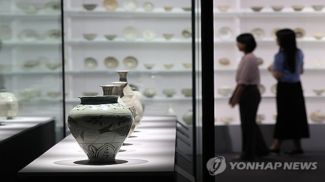BEIJING, 15 June (BelTA - China Daily). - Liang Pu was just another inquisitive teenager when she first heard about the konghou, an ancient multi-stringed, plucked instrument of the harp family. She was reading Kongque Dongnanfei (The Peacock Flies Southeast)-a long poem narrating the tragic tale of a young married couple-when a particular line about a girl's incredible talent caught Liang's attention.
"At 13, she started to weave. At 14, she knew how to tailor. At 15, she learned to play the konghou," the poem read.
Liang was not a stranger to musical instruments. She had been learning to play keyboard devices, such as the piano and the accordion, since she was a child. However, she had never heard of the konghou before. She rushed to the library to find out more, and even asked her music teachers, but the answers barely satisfied her curiosity.
The konghou is believed to have been first introduced in China through the Silk Road, a network of Eurasian trade routes, during the Han Dynasty (206 BC-AD 220).
The instrument had three main types-the vertical konghou, the horizontal one and the phoenix-headed one. The sound box resembles that of a pipa (yet another traditional Chinese instrument). On each side of the sound box is a row of bridges over which some 36 to 44 strings are stretched.
The konghou was a popular orchestral and solo instrument until the 14th century. It lost traction thereafter.
It wasn't until the 1980s that Chinese musicologists and musicians began reviving the ancient instrument by producing its contemporary models. In 1996, two relics of vertical konghou were excavated in Qiemo county, Xinjiang Uygur autonomous region. These turned out to be more than 2,700 years old.
That year, Liang, then 21, became the music teacher of a middle school in Qiemo, where she was born and raised. "I saw photographs of the excavation and was very excited. I dreamed of actually seeing a konghou being played one day," recalls Liang, now 47.
Finally, in 2015, her wish was granted when Beijing-based konghou player Lu Lu came to perform in Qiemo county. "Playing the konghou involves movements like pressing, kneading and sliding, which produce very soothing, deep sounds. I instantly fell in love with it," Liang says.
Between 2016 and 2017, Liang frequently traveled to Beijing to learn to play the konghou with Lu. The arduous travel from her hometown notwithstanding, she felt happy and content.
Backed by the Qiemo administration, Liang soon began offering free konghou lessons to the local children during summer and winter holidays.
Yuan Xi, one of Liang's first trainees, is now studying at Neijiang Normal University of Sichuan province with a major of music education.
In 2019, Liang was even commissioned to coach music teachers of Qiemo. Every year since, a konghou competition is held in the county to promote the instrument.
Lu, vice-president of the Konghou Institute under the Chinese Musicians Association and a teacher at the China Conservatory of Music, says she was impressed by Liang's devotion to learning and promoting the instrument.
"If today the konghou has become hugely popular in Qiemo county, it is because of Liang," she says.
Lu herself was introduced to the instrument at the age of 15, when she studied in a middle school affiliated to the China Conservatory of Music. "If we could compare the konghou to a woman, she'd be someone very refined, quiet and gentle," says Lu.
The musician recalls how much she had wanted to be in Qiemo following the archaeological find of 1996. So, after graduating from the China Conservatory of Music in 2014, Lu paid a visit.
"I had never been to Xinjiang before and I knew no one there. The trip was overwhelming. I vividly remember the drive through the Taklimakan Desert. My first stop after arriving in Qiemo was the museum, where the relics of the konghou were on display," recalls Lu.
Since her visit, Lu has been working with the local authorities to train music teachers and children. "I receive warm feedback from those who learn how to play the instrument," she says.
Over the past few years, says Lu, the konghou has been in demand again, courtesy of government support and media exposure.
It was among the 10 most famous ancient Chinese musical instruments displayed during a performance, titled Qi Tian Yue, by the China National Traditional Orchestra, in February. The gala was hosted by the China Central Television to mark Lantern Festival, and the performance won applause from audiences, particularly the youth.













